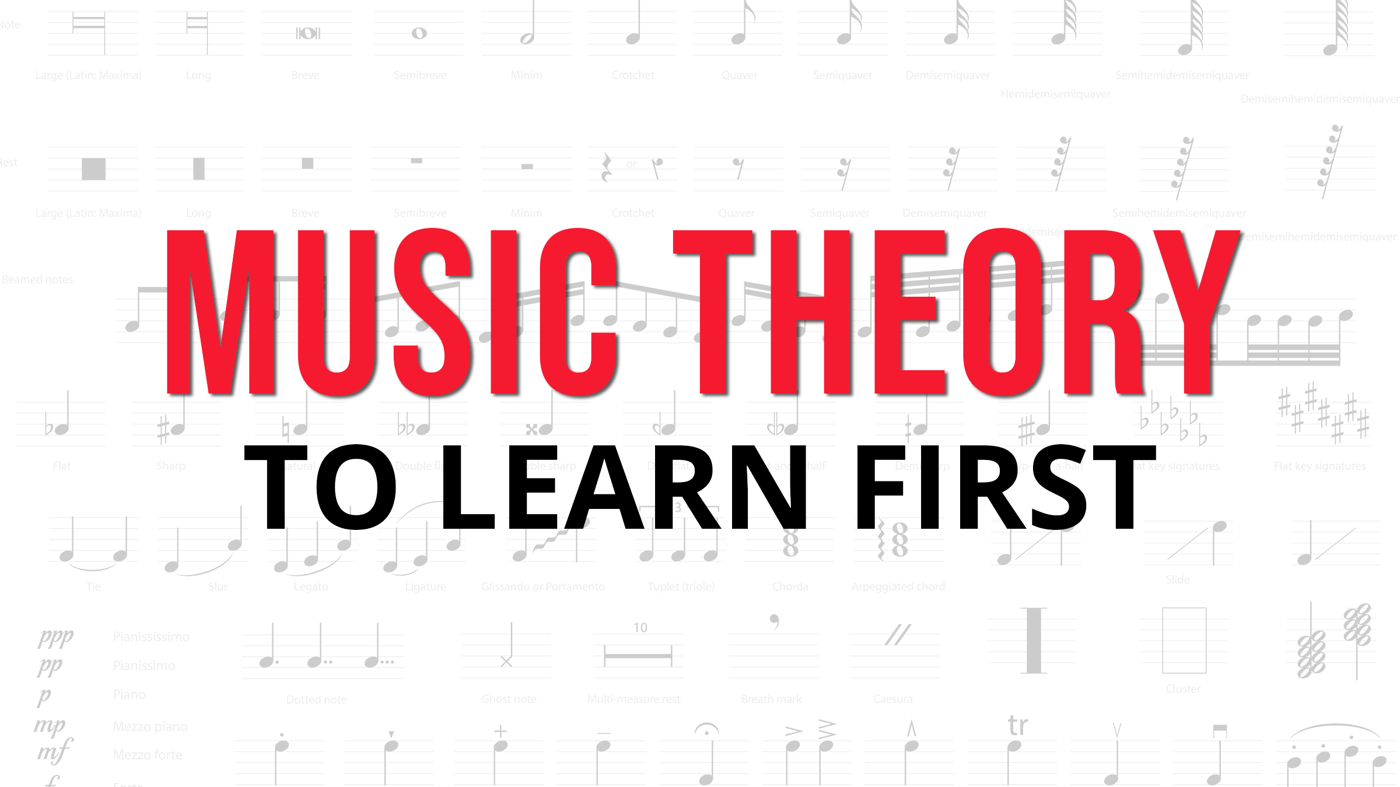
Music theory. It’s a phrase that strikes fear in the hearts of many music students! But theory is important and understanding it will help you play the music you love. So, what are the music theory basics beginners should learn first?
In this lesson, we’ll explain why music theory is so important. And we’ll help you get started on learning fundamental concepts like rhythm, keys, scales, and chords.
Table of Contents:
Inspiring tutorials. Fascinating articles. Exclusive interviews. We create piano content anyone, anywhere can enjoy for free. Don’t miss out, sign up for more free lessons.
So what is music theory, anyway? You can think of music theory as a language or a tool to help us understand, analyze, and appreciate music. Just like understanding grammar helps people learn a new language, understanding the “rules” of music theory can help you…
Many music students find theory overwhelming or confusing. This is valid! Music theory is a big discipline with a long history. And traditional methods of teaching music theory sometimes force students to learn a concept they have no interest in or have use for.
The theory topics you learn should align with your goals. That being said, there are some theory basics all musicians should familiarize themselves with. We’ll run through those after the next section.
> Piano music theory you DON’T want to miss!
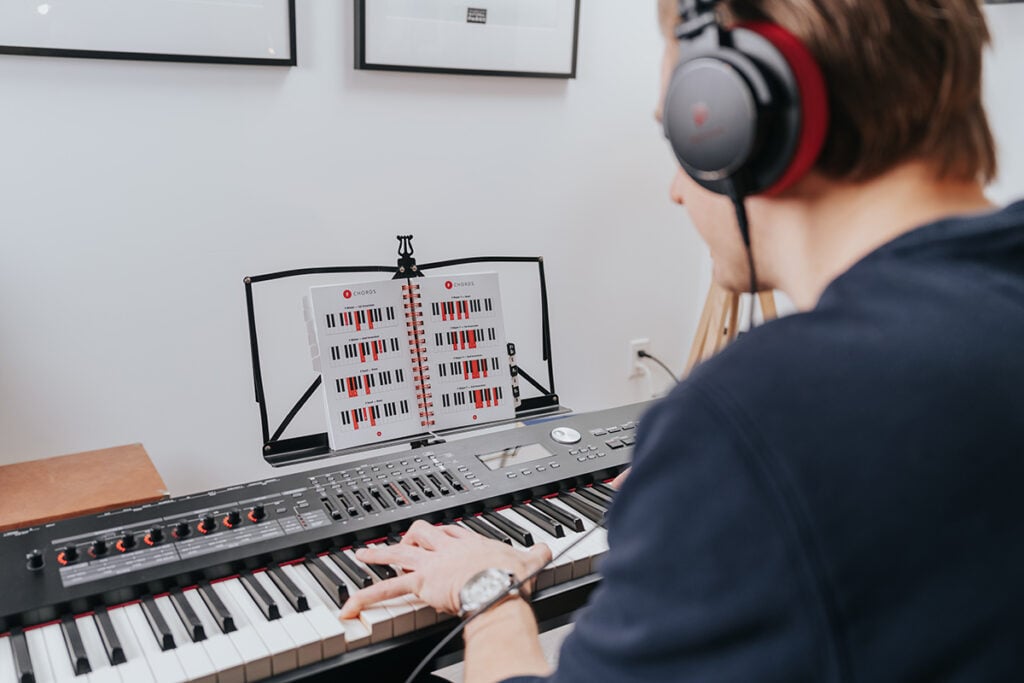
The music theory in pop music is, in general, pretty basic. Pop music tends to re-use similar elements and concepts, such as the I-V-vi-IV progression. Simple doesn’t mean bad, though! Pop musicians use theory knowledge to make smart tweaks (see how Lewis Capaldi does this in “Wish You the Best”). If you want to play pop, consider learning:
> The Most Important Pop Progression
As a Pianote+ Member, you’ll get access to our 10-step Method, song library, and growing community of piano players just like you. Plus: get coached by world-class pianists and learn whenever you want, wherever you want, and whatever you want.
TRY PIANOTE FOR 7 DAYSClassical music can involve complex theory. But if you just want to play (rather than compose), a general understanding of what’s going on in sheet music is enough to learn, understand, and appreciate the music. Knowing how to read sheet music will likely be your first priority because classical music is very sheet music based. Other things to explore include:
> How to Read Notes: The Ultimate Beginner’s Guide
Jazz is notorious for being theory-heavy. Because the essence of jazz is to improvise over chord changes in real time, jazz musicians rely on a solid understanding of theory (and technique!) to reharmonize melodies on the spot. Concepts jazz musicians should explore include:
> The Most Important Jazz Progression
Rhythm isn’t just for drummers! Understanding rhythm can make a huge difference. Think about it: take a melody and play it with all the same note values—it doesn’t sound quite right, does it? Or take improvising with the blues scale: playing the scale up and down can get old fast, but add some varying rhythm and you’ll instantly sound more sophisticated.
To master rhythm, here are some concepts to start with:
Once you have the fundamentals down, you can explore more complex concepts like odd time signatures and syncopation.
Next, get to know the names of the notes. This is called the musical alphabet.
On a piano keyboard, eight white keys make up an octave. These white keys are named after letters in the alphabet.
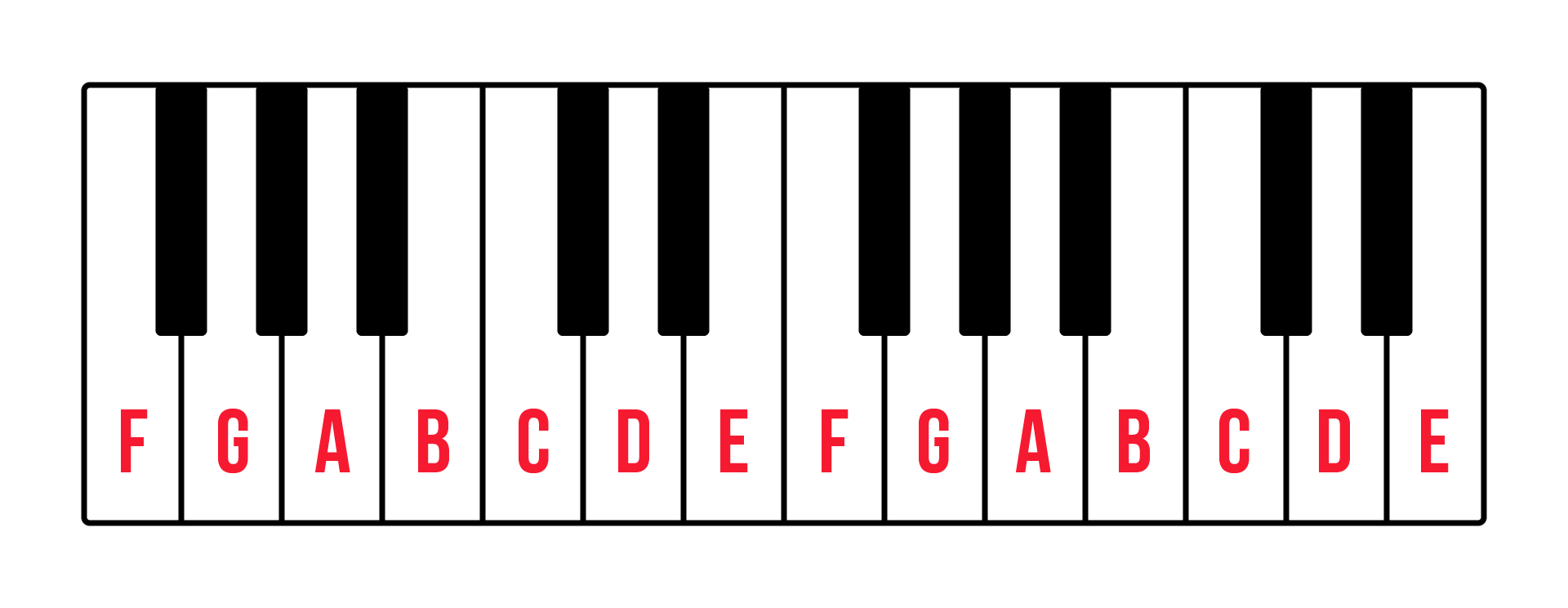
Between the white keys are black keys. These black keys are the flats and sharps between the letters of the musical alphabet.
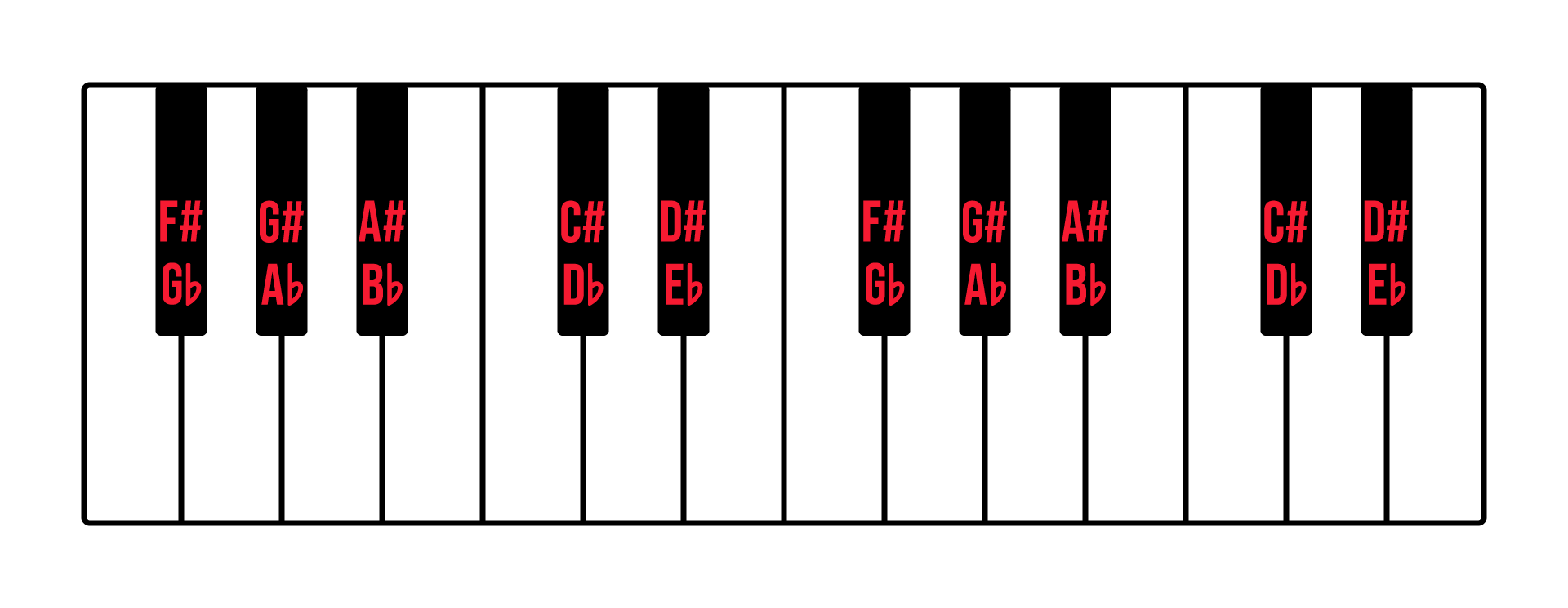
At this point, it helps to understand the difference between whole-steps (aka “whole tones”) and half-steps (aka “semitones”). Half-steps are piano keys that are right next to each other. Whole-steps are made up of two half-steps.
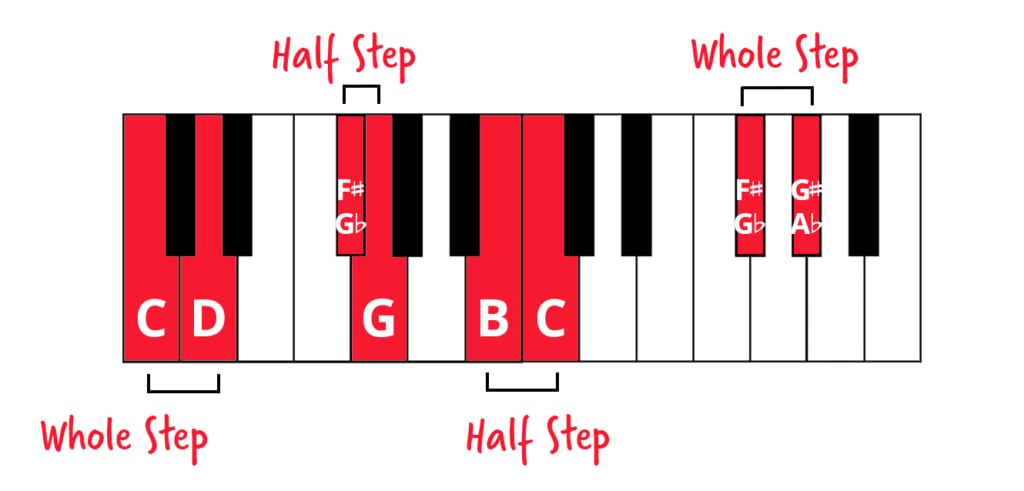
Why do some notes sound good together and some don’t? Scales help us understand how this happens. A scale is a series of notes ordered according to some rule. We can make melodies by picking notes from a scale and shuffling them around. Think of a scale as a “bank” of notes that sound good together, that you can make music out of.
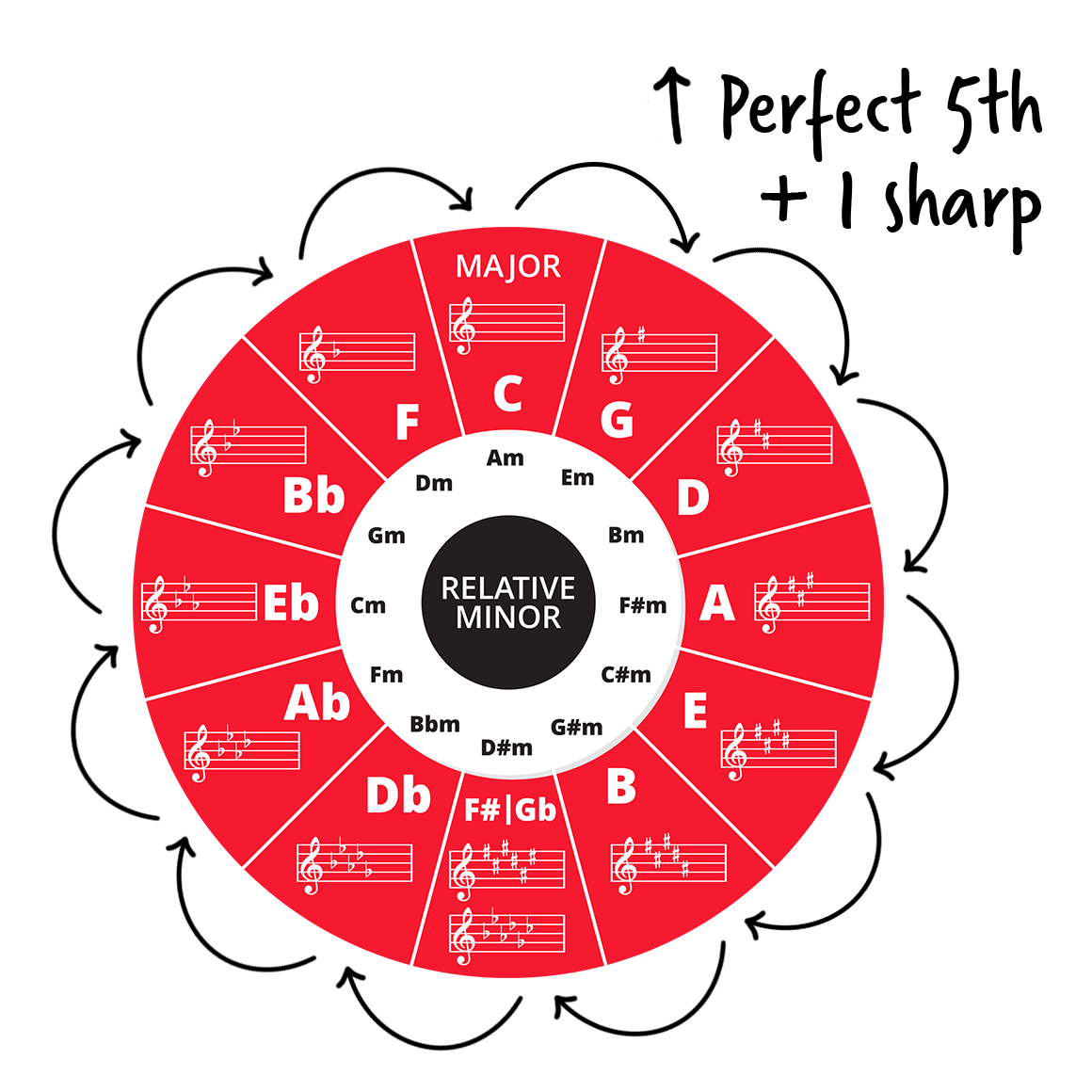
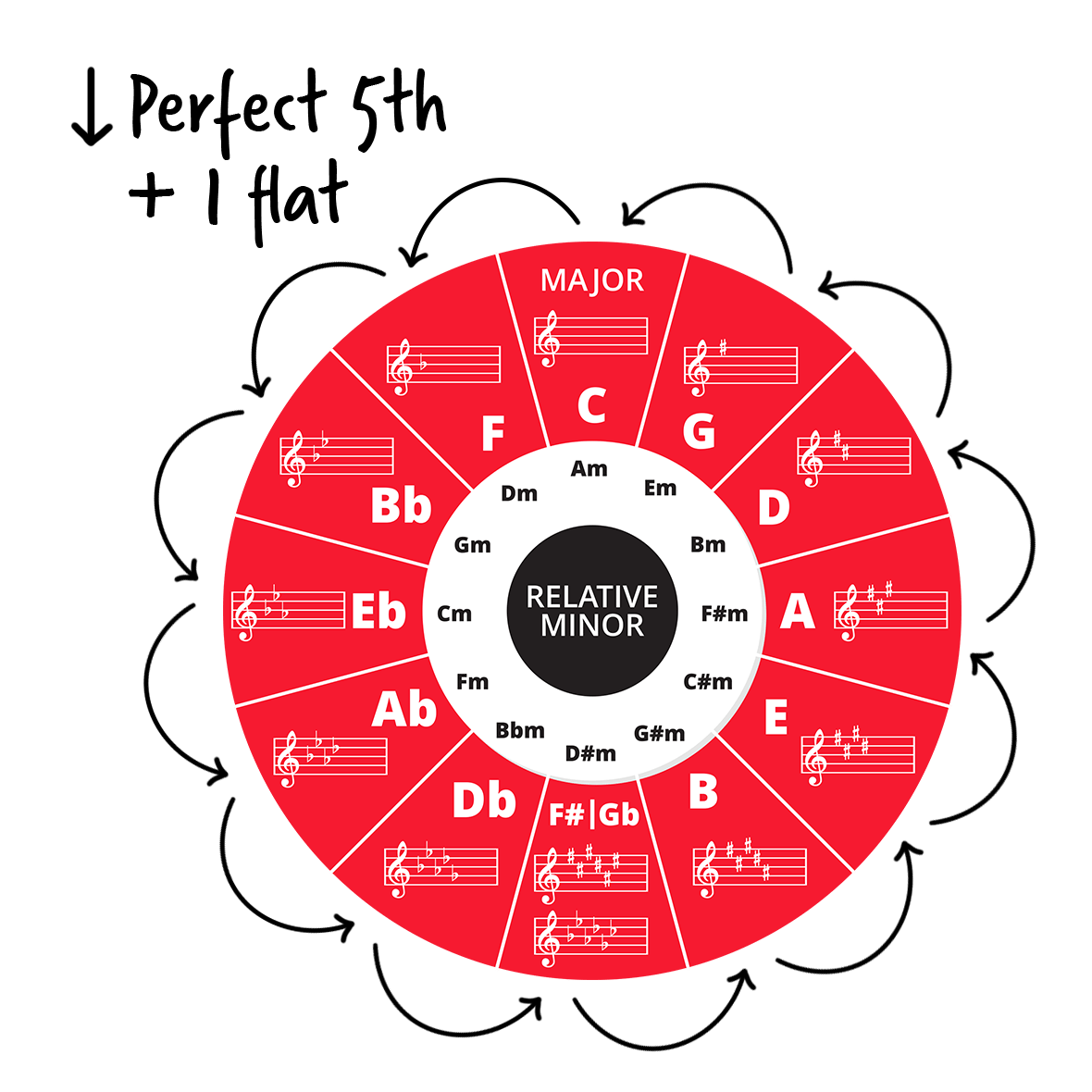
> How to Use the Circle of Fifths
Remember how I said scales are notes ordered according to a rule? Oftentimes, that rule is the key. Beginners should start by learning the major scales (scales in major keys) and the three minor scales (scales in minor keys). Different keys have different rules for what notes go into the scale and which notes are altered by sharps and flats. The number of sharps and flats in a song is indicated by the key signature at the beginning of a piece of sheet music.
Scales and keys are important concepts that can get a little tricky for beginners. But they’re worth the time and effort to learn, we promise!
> Types of Scales and How to Apply Them
Intervals are the distance between two notes. Melodies are simply a series of intervals. Each interval has its own unique sound and mood, so if you train your ears to recognize intervals, you can figure out melodies by ear!
The theory behind intervals requires some knowledge of scales and keys. For example, C-E is a major third because E is the third note of the C major scale. Meanwhile, C-Eb is a minor third because Eb is the third note of the C minor scale.
You can also memorize intervals as numbers of whole and half-steps.
> Ultimate Guide to Interval Ear Training
Chords are one of the most important concepts you’ll learn in music. Everything in Western music is based on chords, from Mozart to Duke Ellington to Billy Joel.
What is a chord? A chord is bunch of notes grouped together, that sound good together (harmonize). Types of chords evoke certain sounds; for example, major triads sound happy while minor triads sound sad.
Chords are built on a note called the root, which is the note the chord is named after (ie. C Major Triad). From the root, we build chords by stacking intervals. The formula for a major triad is 1-3-5 (root, major third, perfect fifth) while the formula for a minor triad is 1-b3-5 (root, minor third, perfect fifth).
Because chords are so important, we have a lot of free resources on chording. Check them out!
Put some chords together, and you get a chord progression!
You can think of chord progressions as the “scaffolding” of a song. Chord progressions underline the general harmonic movement of a song.
There are some chord progressions that get used over and over again in music. This doesn’t make the music boring—these progressions just work that well!
Being able to recognize chord progressions by ear is a very useful skill because it can let you quickly sketch out the fundamentals of a song without having to hunt down notation. So, listen to a lot of music in the genre you like and see if you can recognize the sound of common progressions.
> The Most Common Chord Progressions
When you get to this point in your learning journey, it’s worth learning the number system too. It’ll help you think about chords in relation to other chords, and frees you from being constrained by key.
Let’s get this out of the way: music theory is vast. People do doctorate degrees in this topic. At the same time, many musicians with thousands of fans may not have studied music theory formally at all.
The point is: you don’t need to know everything about music theory to play incredible music.
So, please don’t be overwhelmed! Rather, approach theory from a curiosity perspective. What interests you? What makes you go “ooooh”? What helps you play the beautiful music that you love?
Happy practicing!
Charmaine Li is a Vancouver writer who has played piano for over 20 years. She holds an Associate diploma (ARCT) from the Royal Conservatory of Music and loves writing about the ways in which music—and music learning—affects the human experience. Charmaine manages The Note. Learn more about Charmaine here.


By signing up you’ll also receive our ongoing free lessons and special offers. Don’t worry, we value your privacy and you can unsubscribe at any time.
We use cookies for traffic data and advertising. Cookie Policy »